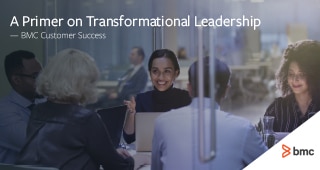CIOs face a number of challenges when it comes to the concept of digital transformation or DX. And there is often immense pressure to launch big digital changes to gain a competitive advantage, for example, creating a roadmap to keep critical processes and technology current. All this must be done while laying the groundwork for an innovative, forward-thinking corporate culture.
With many considerations to be made when working through digital transformation, it’s no surprise that many experts have published material on the subject. With that in mind, here are my top picks for reading about Digital Transformation.
(This article is part of our Tech Books & Talks Guide. Use the right-hand menu to navigate.)
EDGE: Value-Driven Digital Transformation
Jim Highsmith, Linda Luu, David Robinson
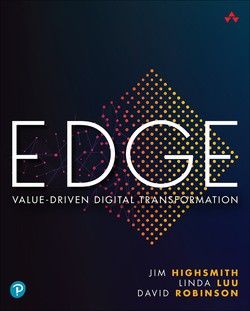
Target Audience
EDGE is written not for just any CEO, CIO, chief digital officer, CMO, chief strategy officer, program manager, or individual contributor – it is written for a unique segment of leaders known as Courageous Executives. These leaders are “boundless in their thinking, bold in their actions, and passionate about technology. EDGE is written for those who are committed to moving forward and enacting transformation.
Summary
EDGE provides a framework to help enterprise transform with practical advice. It contains clear methodologies and strategies for digital transformation initiatives with an emphasis on outcomes. EDGE is the most recent addition to this list of digital transformation books, and perhaps the most useful as well for organizations in need of an operating model to help them thrive on the edge of change.
About the Authors
Jim Highsmith is an Executive Consultant at ThoughtWorks with more than 50 years’ experience in the IT industry in various capacity. Jim has been a strong voice in the agile community for the past 20 years.
Linda Luu is a consultant and Head of Digital Transformation at ThoughtWorks. For two decades, Linda has helped organizations around the world with digital transformation particularly in the areas of design thinking, big data and analytics, portfolio management, and agile delivery.
David Robinson is a Principal Consultant at ThoughtWorks. David is a “recovering executive”, having spent more than 30 years as a CIO and in other leadership positions in and outside of technology. David helps organizations drive digital transformation.
The Digital Transformation Playbook
David L. Rogers
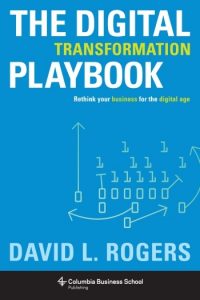
Target Audience
Any business leader, but specifically those at the helm of businesses that were established before the age of the Internet.
Summary
Rogers provides clear direction for pre-digital era companies to realign their businesses, not by updating technology but rather by changing their business strategy and corporate thinking in order to compete more effectively in a technology-driven world.
This playbook offers step-by-step guidance for legacy businesses to succeed in a digital economy by understanding that:
- Customers are part of a network.
- Competition comes from platforms more than products.
- Data is a strategic asset.
- Innovation is driven by small experiments and scaling.
- Value is dynamic and adaptable.
These insights make The Digital Transformation Playbook an invaluable resource for businesses struggling to successfully ignite their digital transformation.
About the Author
Rogers is an author, speaker and consultant best known for working with global companies such as Google, GE and IBM. When he’s not traveling to speak to audiences or consult for large enterprises, Rogers teaches digital strategy and marketing at Columbia Business School.
Digital to the Core: Remastering Leadership for Your Industry, Your Enterprise, and Yourself
Mark Raskino and Graham Waller
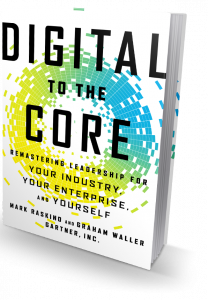
Target Audience
CEOs, CIOs, CTOs and business leaders interested in learning how to remap their industry to embrace new technology.
Summary
In the Gartner book, Digital To The Core: Remastering Leadership For Your Industry, Your Enterprise, and Yourself, the authors suggest that three disruptive forces are critical to penetrating an organization’s technology and culture:
- Resolution Revolution – According to Gartner, this factor allows us to accurately “measure and precisely control things and events.”
- Compound Uncertainty – This represents complex digital changes that shift the paradigm for how leaders run their business within a given industry and the implications of such changes. These occur in three areas: technology, culture and regulation.
- Boundary Blurring – This occurs when the physical and digital worlds collide and bring about change within the organization.
According to the authors, leaders must be open to being pioneers in their organizations. They recommend focusing on remapping your industry, remodeling your enterprise and remaking yourself.
Each of these, described in depth in the book, work toward the goal of a leadership paradigm shift, that allows leaders to redefine their organizations to embrace changes in technology.
About the Authors
Raskino and Waller are both executives at Gartner. Raskino is the Vice President of the organization, while Waller is Research Vice President.
Digital Vortex: How Today’s Market Leaders Can Beat Disruptive Competitors at Their Own Game
Jeff Loucks, James Macaulay, Andy Noronha and Michael Wade
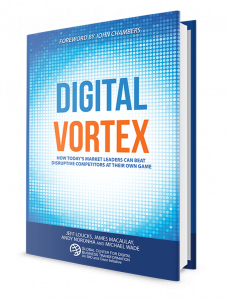
Target Audience
C-level executives who want to compete in a time of disruptive technology.
Summary
The author describes the Digital Vortex as “a force that pulls everything to the center”. In this metaphor the vortex is chaotic, drawing things to its middle at increasing velocity as disruption occurs, causing organizations to smash into one another sometimes merging or dissolving completely. At the center is a complete digital revolution.
The book begs several questions: How will your business fair in this vortex? Will it collapse? Will it become something different? Will it be stronger and more successful? The authors attempt to unlock the answers that will provide leadership with insight on how to achieve the best results.
The text explains that legacy businesses are focused on three areas:
- Capital
- Brand
- Customers
While startups are focused on three distinct aspects of business, also:
- Agility
- Experimentation and Risk
- Innovation
At the core, the book asserts that established businesses with legacy technology have a lot to learn from startups as they navigate the digital vortex.
About the Authors
Loucks is the Executive Director of Deloitte. He is the former Director at Cisco’s Digitization office and has specialized in disruptive technology for about two decades.
Wade is a professor at IMD, teaching Innovation and Strategy. He also holds the Cisco Chair for Digital Business Transformation and is the Director of a Cisco and IMD joint-initiative called the Global Center for Digital Business Transformation.
Noronha is a current Director at Cisco’s Digitization office and has been with the company for a decade. In his current role, he develops and deploys strategy to keep Cisco at the forefront of industry disruption.
Macaulay is a Senior Director at Cisco’s Digitization office. He has published an extensive amount of research on digitization and has a career that spans over two decades.
Be the Business: CIOs in the New Era of IT
Martha Heller
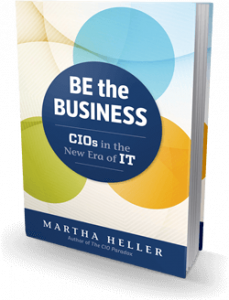
Target Audience
This practical text is thought-provoking for CIOs who want to lead innovatively in today’s digital economy.
Summary
Heller illuminates the path for CIOs who want to overcome digital disruption. For the first time, companies are using technology in every aspect of business and IT isn’t a limited department. The book outlines the many dilemmas that today’s CIOs face as businesses experience these changes.
With a deep knowledge of how the role of CIO has changed over the last five years, Heller outlines traits that are important for CIOs to embody in their leadership strategy. She provides insight on how to position the internal IT department in a number of ways:
- As management consultants,
- As customer experience experts,
- As innovators,
- As security professionals; and
- As promoters of end-user adoption
About the Author
Heller is the Founder and CEO of Heller Search Associates, a recruitment firm specializing in executive IT placement. Before starting her own business, she was Managing Director of the IT Leadership Practice at ZRG Partners.
No Ordinary Disruption: The Four Global Forces Breaking All the Trends
Richard Dobbs, Dr. James Manyika and Dr. Jonathan Woetzel
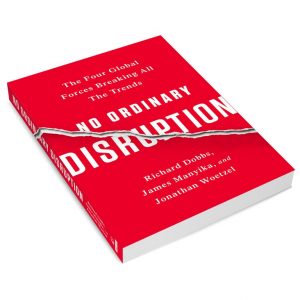
Target Audience
All business leaders and executives looking to respond to a disruptive digital business world.
Summary
A publication from the McKinsey Global Institute, No Ordinary Disruption examines trends in disruption to provide a timely analysis of the digital transformation that businesses are currently undergoing. The author considers four critical forces surrounding disruptive technology trends:
- The rise of emerging markets
- The impact of technology on the natural forces of market competition
- The aging population of the world
- Accelerating flows of trade, capital, people and data
This book beckons business leaders to challenge their intuitions to embrace disruption and digital transformation. The authors believe our current collective intuition was formed during the Great Moderation, a period of economic stability which started in the mid-1980’s. However, this era is over and understanding the disruptive forces at play today is more important than ever.
The depth of research and analytics plus a uniquely energetic writing style makes this the perfect text for any business leader.
About the Authors
Dobbs is a Senior Partner at McKinsey, London. He is responsible for research and the service of clients ranging from IT to the financial industry.
Manyika is Chairman and Director, McKinsey Global Institute and Senior Partner, San Francisco. He specializes in clients from high tech industries and draws knowledge from years of experience in innovation and strategy.
MGI Director and Senior Partner in Shanghai, Woetzel offers his experience working for McKinsey in China. His responsibilities include research on global business trends and providing strategy for cities to create sustainable economic growth.
The New IT: How Technology Leaders are Enabling Business Strategy in the Digital Age
Jill Dyché
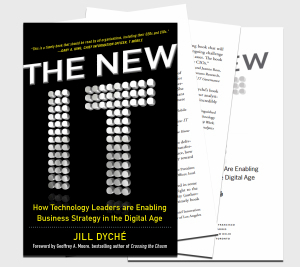
Target Audience
CIOs, CTOs and in-house IT leaders who are now charged with leading their company towards its digital destiny.
Summary
The revolution that’s occurring in enterprise IT kicks the tech executive’s role up to a new, more prestigious level. But CIOs who aren’t aware of how to maneuver these changes run the risk of becoming irrelevant players within the organization.
The New IT: How Technology Leaders are Enabling Business Strategy in the Digital Age is a strategy guide for technology professionals who have been on the offensive line of ushering their organizations into the digital age that is now upon us. Unquestionably, these IT visionaries deserve a seat at the leadership table, and the author arms them with the tools to do just that.
By way of research and strategic insight, Dyché provides executives with resources that will train CIOs to succeed in a dynamic workplace.
About the Author
Dyché is an author, advocate and advisor to top companies around the globe. She has been an IT consultant for over two decades. When Dyché isn’t publishing new material, she lectures at IT conferences and pursues her passion for animal advocacy.
Lean Enterprise: How High Performance Organizations Innovate at Scale
Jez Humble, Joanne Molesky, and Barry O’Reilly
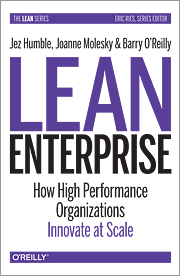
Target Audience
Software developers and IT departments who are embracing Agile.
Summary
O’Reilly Media published Lean Enterprise to offer a guide to enterprise software development that questions how well IT departments and developers adjust to a fluctuating market, customer need and new technology. Based on Lean/Agile principles, the author provides instruction on how to scale for an enterprise model and how to turn around projects quickly without compromising quality.
One of the best features of the book is that it offers real-life examples in the form of case studies that readers can apply to their knowledge and experiences. As the need for qualified DevOps professionals has only inflated since this book was published in 2014, Lean Enterprise is an invaluable resource for anyone seeking to elevate their career in IT.
About the Authors
Humble is a speaker, author and consultant who has worked with many Fortune 500 companies on their enterprise software development strategy. He has co-authored two award-winning books, Lean Enterprise and Continuous Delivery. The latter is a guide to successful software releases.
Molesky is an IT Risk & Compliance consultant with ThoughtWorks. She consults on software development areas that include continuous delivery and process improvement and offers a unique lens of how it applies to risk, compliance and controls.
O’Reilly is an expert on continuous improvement using Lean and Agile philosophy. He offers insight from his experience as a consultant to enterprise companies as well as startups.
Leading Digital: Turning Technology into Business Transformation
George Westerman, Didier Bonnet, and Andrew McAfee
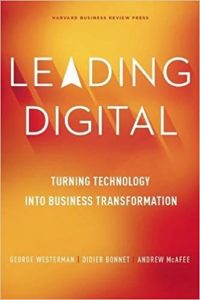
Target Audience
Anyone who wants their business to become a Digital Master in the tapestry of the digital era.
Summary
In Leading Digital: Turning Technology into Business Transformation the authors tout their complete guide on how to turn your company into a digital master in just 12 steps. Each is described in detail in the text.
These include:
- Building awareness. Ensuring that each leader in the organization is on board with creating a strategy around digital disruption.
- Finding your starting point. It is important to take inventory of your company’s digital competencies and determine which are most mature and which need more work.
- Creating a shared vision. This is key because alignment within leadership is required for success.
- Translating your vision into action. This involves setting strategic goals and creating a plan for action.
- Building your governance. Strong digital governance is essential for completion.
- Funding the transformation. This means making sure the budget is there to support your goals.
- Signaling your ambitions. Market the goals of the transformation to internal or external stakeholders.
- Earning the right to engage. Allow employees to earn mindshare during this process. Determine which employees would be active participants that may have ideas about digital transformation to help co-create solutions.
- Setting new behaviors and the evolution of culture. Changes in technology are almost always a catalyst for some cultural changes.
- Building foundation skills. Form a well-thought-out and structured digital platform.
- Aligning incentives and rewards. This step is critical to overcoming the hurdle of employee resistance.
- Measuring, monitoring and iterating. Make sure processes are in place to do all three.
About the Authors
Westerman is a Research Scientist at the MIT Sloan Initiative on the Digital Economy. His research and instruction focuses on digital leadership and innovation.
Bonnet is a Senior Vice-President and Global Practice Leader at Capgemini Consulting. He is also Executive Sponsor for Capgemini’s Digital Transformation offering.
At MIT, McAfee is a principal research scientist who co-founded the institution’s Initiative on the Digital Economy.
The DevOps Handbook: How to Create World-Class Agility, Reliability, and Security in Technology Organizations
Gene Kim, Jez Humble, Patrick Debois and John Willis
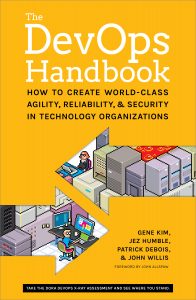
Target Audience
Business owners and C-level executives who have an internal IT department and are considering expanding to DevOps, or those who already employ DevOps professionals but want to know more about effective management for this group.
Summary
The value proposition of The DevOps Handbook is that the management of technology is a key component for competitiveness in a digital marketplace. It offers research and insight on the role that effective DevOps strategy and development can make on a company.
This guide presents leaders with ways to increase organizational learning by creating cultural norms and deploying the right digital practices.
About the Authors
Kim is the Founder of IT Revolution and also an acclaimed author and researcher. In his career, he has won awards as CTO, which was a role he served in for 13 years. Gene has published four books on technology, including The DevOps Handbook.
Humble is a speaker, author and consultant who has worked with many Fortune 500 companies on their enterprise software development strategy as mentioned above.
Dubois is an expert at bridging the gap between project teams and operations. He is the current CTO of Small Town Heroes and offers specific insight on Agile principles, project management and system administration.
Willis is the current Vice President of DevOps and Digital Practices at SJ Technologies and has worked with IT Revolution for over 35 years.
Building the Future: Big Teaming for Audacious Innovation
Amy C. Edmondson and Susan Salter Reynolds
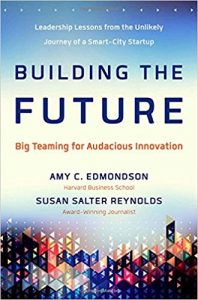
Target Audience
This book is for anyone who wants to learn about the landscape of digital transformation across industries and who is interested in the concept of big teaming. It is particularly relevant for business owners, executives and business leaders.
Summary
Authors Amy C. Edmonson and Susan Salter Reynolds explore the complex world of big teaming in this landmark publication. By design, the book addresses the concept of large-scale innovation that is systemic in nature, and the intense collaboration that must occur between professionals and industry with many differences but share a common goal, getting through digital transformation.
Their research includes anecdotes from professionals across many backgrounds including software entrepreneurs, real estate developers and building contractors. When readers dive into Building the Future, they get an idea for the differences in principles, values and operations across the industries explored, and begin to understand the challenges associated with big teaming.
About the Authors
Edmonson is a Novartis Professor of Leadership Management at Harvard Business School. She studied at Harvard and began her career as Chief Engineer at Buckminster Fuller Institute in the 1980s.
A 25-year veteran writer for the Los Angeles Times and published author, Salter Reynolds offers her insight on a variety of subjects with authority and finesse.
Digital or Death: Digital Transformation – The Only Choice for Business to Survive, Smash, and Conquer
Dominic Mazzone
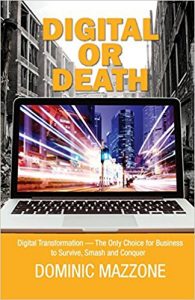
Target Audience
CIOs and CTOs who want to learn about how to navigate digital transformation, and who are more inclined to learn from books that may be written in a non-traditional way.
Summary
What’s possibly most unique about Digital or Death is it’s fresh approach to digital transformation using lively language and real world examples. The energy of the author is felt throughout the text, making it a more exciting read than most books you pick up on technology.
While the author does offer humorous anecdotes, by design this book is meant to expand the creative, divergent thinking of the CTOs and CIOs who benefit from learning about the author’s approach to DX strategy. The book offers insight using the following cornerstones:
- Defining digital transformation
- Providing practical strategy to avoid digital die-off
- Listing and educating on the four pillars of digital transformation
- Offering suggestions on Wonder Theory
- Championing disruption via Revolution Delivery
- Explaining the importance of Dynamic Interaction
- Incorporating the Strawberry Model and Christmas Effect into your business
If some of these models and concepts sound foreign to you, it’s time to pick up the book and learn from one of the greatest minds in digital transformation.
About the Author
Mazzone is a digital guru, public speaker and consultant who works with enterprise businesses on digital transformation. A serial entrepreneur, he takes pride in his ability to help startups reach their full potential as highly-sought-after industry disruptors.
The Digital Matrix: New Rules for Business Transformation Through Technology
Venkat Venkatraman
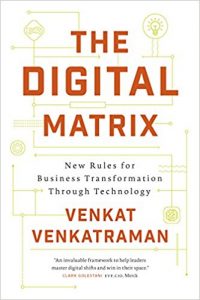
Target Audience
Legacy business owners and C-level executives.
Summary
Many businesses that have been around for a long time, don’t question the operational rules that made them successful. As a result, they are working under an antiquated model that doesn’t set them up for optimal success in the digital era.
The goal of The Digital Matrix is to update the strategic playbook for legacy businesses who are now in a marketplace where they compete with smart, savvy startups who corner entire market shares.
The Digital Matrix helps business leaders understand the types of players in the new business landscape, the phases of transformation and three winning moves. Digital transformation is not one-size-fits-all and this playbook offers strategies that could work for most legacy businesses. As such, The Digital Matrix is an essential piece of literature for any business owner who has been in business prior to the Internet.
About the Author
Venkatraman is the David J. McGrath Jr. Professor of Management at Boston University Questrom School of Business. He is appointed to the Information Systems and Strategy and Innovation Departments. He has taught at MIT and London Business School and has received multiple awards for his work.
Even more great books
World Class IT
Peter High
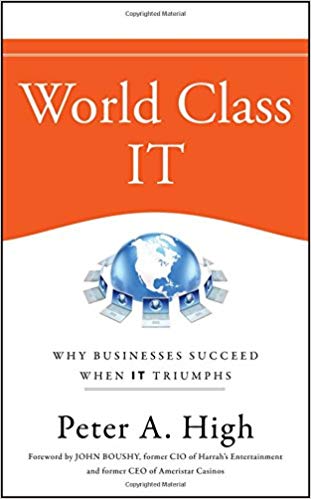
View on Amazon: https://www.amazon.com/World-Class-Businesses-Succeed-Triumphs/dp/0470450185
A Seat at the Table: IT Leadership in the Age of Agility
Mark Schwartz
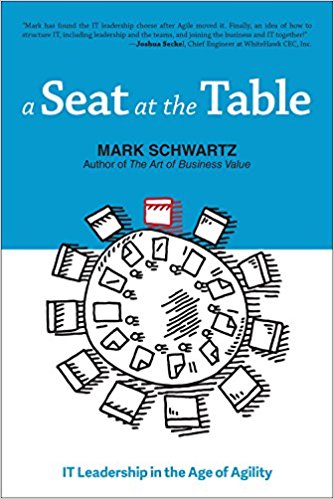
View on Amazon: https://www.amazon.com/Seat-Table-Leadership-Age-Agility/dp/1942788118
IT Savvy: What Top Executives Must Know to Go from Pain to Gain
Peter Weill and Jeanne W. Ross
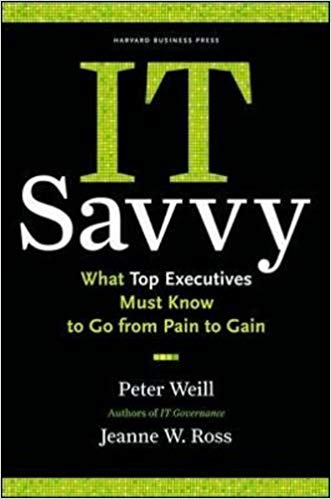
View on Amazon: https://www.amazon.com/Savvy-What-Executives-Must-Know/dp/1422181014
Real Business of IT: How CIOs Create and Communicate Value
Richard Hunter and George Westerman
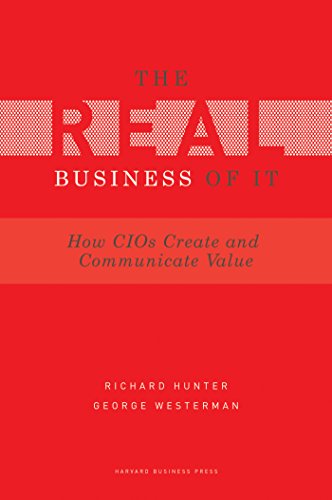
View on Amazon: https://www.amazon.com/Real-Business-Create-Communicate-Value/dp/1422147614
Building the Agile Business through Digital Transformation: How to Lead Digital Transformation in Your Workplace
Neil Perkin and Peter Abraham
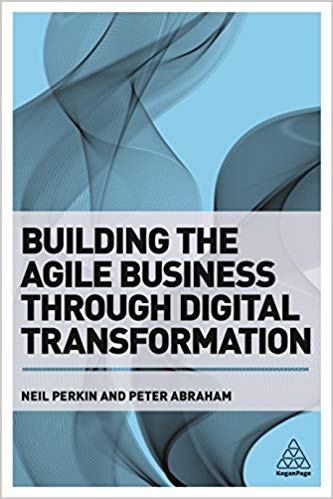
View on Amazon: https://www.amazon.com/Building-Business-through-Digital-Transformation/dp/0749480394
Conclusion: Digital Transformation Is Here
These books offer a wide range of insight for CTOs, CIOs, executives, business owners, industry pioneers, legacy companies and software developers. With many strategies for overcoming digital transformation, there is truly something for everyone in this list of top 12 books.
However, the one common thread in all of these publications is the warning that digital transformation is no longer approaching; it’s already here. And any organization that has not started to plan for a cultural shift to embrace technology in every process across all departments could face the risk of falling behind its competitors in the digital vortex of change.

